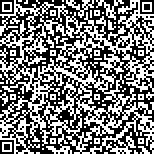下载中心
优秀审稿专家
优秀论文
相关链接
摘要

火烧迹地是全球及区域碳循环和气候变化等研究所需的重要参数之一,卫星遥感技术为快速获取大区域火烧迹地空间分布信息提供了有效手段。中国科学院基于Landsat系列卫星数据研发了首个30 m空间分辨率全球火烧迹地产品GABAM (Global Annual Burned Area Map)。遥感数据产品的精度验证对产品使用具有重要意义,迄今尚未有研究机构对GABAM产品精度进行独立评价和分析。为系统评价GABAM产品精度,利用2010年全球30 m空间分辨率火烧迹地产品(GABAM2010)开展精度验证研究工作,在全球和几个陆地生物群落中估算了产品精度,并探索了全球遥感专题产品精度验证的技术框架。基于分层随机抽样选择80个非重叠的泰森多边形区域TSA (Thiessen Scene Areas),采用误差矩阵和6个精度指标对GABAM2010产品做全面精度评价和分析,以满足火烧迹地产品用户的使用要求。结果表明:在全球范围内,GABAM2010产品的错分率和漏分率分别为24.32%和31.60%,总体精度为97.85%;由于数据质量(如条带、云)等的影响,火烧迹地的范围会被低估,对于较容易发生火灾的生物群落,如热带亚热带草原区域,GABAM2010产品精度较高;在生物群落内部,高密度火烧迹地区域的精度高于低密度火烧迹地区域。
Burned area is one of the key parameters for global and regional carbon cycle and climate change research. Satellite remote sensing technologies provide an effective way for obtaining the large-scale spatial distributions of burned areas. In 2018, the Chinese Academy of Sciences released the first GABAM (Global Annual Burned Area Map) based on Landsat series satellite data. The accuracy assessment of remote sensing data products is of great significance for product users. To date, the accuracy of GABAM products is yet to be independently evaluated. In this study, an accuracy validation study was performed on the 2010 global 30 m spatial resolution burned area product (GABAM2010) for the systematic evaluation of GABAM product accuracy. The GABAM2010 product was validated, and accuracy measures were estimated at the global scale and in several terrestrial biomes, and the technical framework for the accuracy assessment of global remote sensing thematic products was explored. Global accuracy was estimated by stratified random sampling and estimation in a weighted manner on the basis of the error matrix of each sampling unit. This method enables the verification of a large number of products, such as the global burned area product. Stratified random sampling was used in selecting 80 non-overlapping TSA (Thiessen Scene Areas), and reference fire perimeters were determined from multitemporal Landsat TM images for each sampled TSA. Error matrices and six accuracy measures were used in satisfying the criteria specified by the end-users of burned area products. The global validation result showed that the overall accuracy of GABAM2010 was 97.85%, and the commission and omission errors were 24.32% and 31.60%, respectively. The extent of a burned area is often underestimated due to the impact of data quality, such as strips, and clouds. The GABAM2010 products showed high precision in biomes, including tropical and subtropical grasslands, which are highly prone to fire. The high-density burned areas within biomes had higher accuracy than low-density ones. A statistically rigorous accuracy verification method, stratified random sampling was used in verifying the GABAM 2010 product. The method is applicable for the accuracy verification of similar remote sensing products, and the results of the evaluation performed on the GABAM 2010 product illustrated the specific applications of sampling design and accuracy analysis. Compared with simple estimatior, combined ratio estimator with stratified random sampling increased the reliability of the accuracy measures. Simple estimatior is ineffective in resolving some problems arising from the small proportion of an area burned and small number of sampling areas, which result in unreliable accuracy estimates. By contrast, stratification ratio estimation uses global ecological and fire behavior data and can obtain reliable accuracy estimate results.

